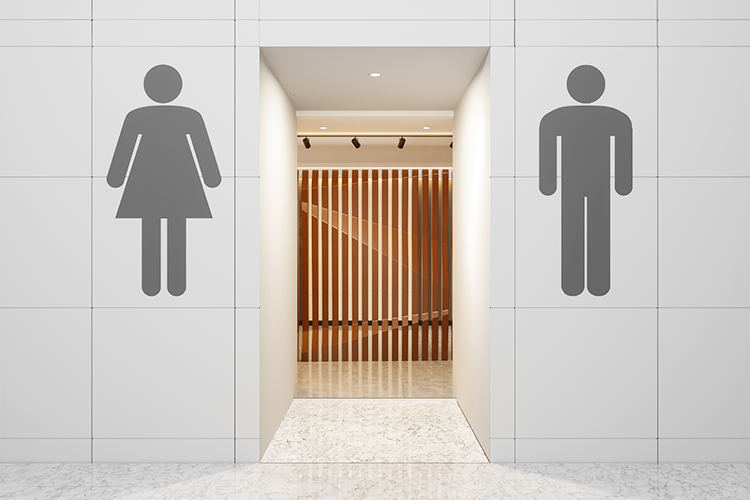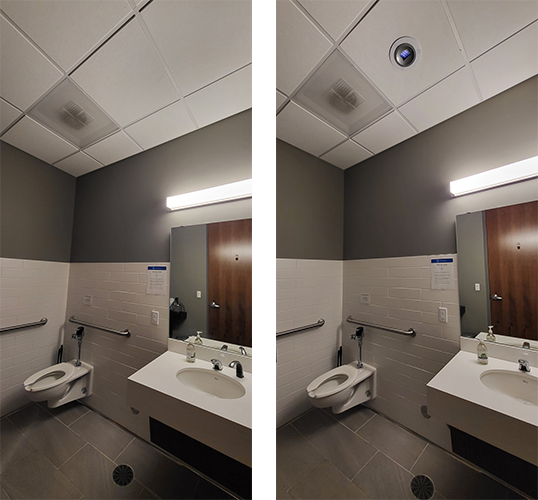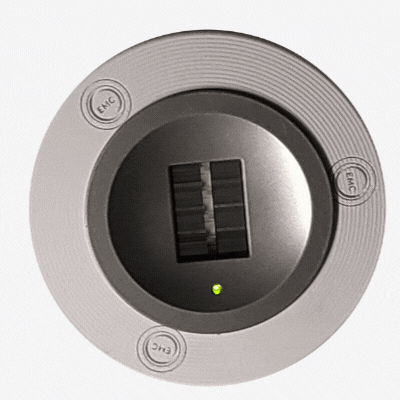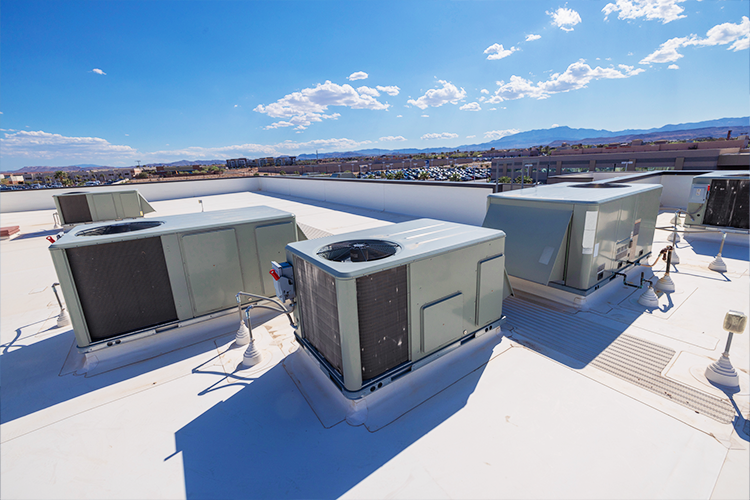EMC’s Living Lab: Fighting Airborne and Surface Contaminants in Occupied Spaces
June 15, 2022
When EMC moved to its new headquarters in 2018, it was done with the idea that the building would not only showcase the products and services we offer, but that it would also serve as a “living lab.” We wanted first-hand experience of what it was like to live and work—day in and day out—with the technologies and solutions we designed and installed for customers.
That work started with LED lighting and controls in EMC’s workspaces and offices. The pandemic expanded the effort to include disinfection UV-C lighting solutions in air ducts and rooms. Recently, testing the latest UV-C technology has taken us to important but typically inconspicuous spaces: restrooms.

Before + After
A restroom is often not the first place that comes to mind when thinking about dazzling lighting and controls technologies. However, restrooms—particularly restrooms in health care facilities—are a focus area when it comes to infection prevention.
After more than two years of battling COVID-19, people are hyper-focused on their environments. They demand that building owners take the necessary steps to keep on the path of continuously improving indoor environmental quality (IEQ). We want to feel safe and be safe at work, school, hospitals and other public spaces.
Restrooms are an ongoing priority for both air and surface cleanliness and current labor shortages only add to the challenge. The traditional approach, which concentrates on manual liquid cleaning methods, is intermittent, inconsistent, and does not address airborne contaminants.
Selecting a safe, effective technology
222 nm UV-C, an exciting new technology with the ability to treat a wide range of contaminants, has recently entered the market. Independently tested to be both safe and effective in neutralizing viral pathogens including COVID-19, as well as contaminants like mold and fungus, 222 nm UV-C is safe to use in spaces where people are present. Testing has shown that the 222 nm wavelength does not penetrate the living tissue of the skin or tear layer of the eye.

The lamp, which has a slight purple glow, cycles continuously. Since UV-C is invisible, the lamp does not affect existing light in the room. This can be significant for health care (and other installations) where color correctness is important for patient exams. That being said, combination fixtures with 222 nm UV-C and illuminating down lights are also available.
Determining optimized lamp location
As with all of our customer installations, we analyzed the space to determine the optimal position for the lamp. A computer simulation was used to generate a map of UV-C light energy levels throughout the space in order to balance UV-C light distribution for optimum air and surface disinfection.

The recessed can light configuration allowed the 222 nm UV-C lamp to be conveniently positioned around existing lights, HVAC inlets, and other ceiling mounted devices without having to make significant changes to the ceiling.
Integrated cost-effective lamp controls
Each 222 nm lamp is fitted with integrated controls so it can be operated independently eliminating the need for field installed controls or commissioning.
Experiencing results
222 nm UV-C lighting is not a replacement for liquid cleaning. However, when the two are used in combination, the technology expands facilities’ disinfection capabilities, providing ongoing air and surface disinfection between liquid cleanings, day and night.
Overall, the efficacy combined with application flexibility of 222 nm UV-C makes it a very attractive solution for restrooms or wherever real-time air and surface disinfection in occupied spaces is desired.
Kent Shields is the general manager of EMC’s Specialty Lighting business unit with a focus on UV-C disinfection products, grow lights and human-centric lighting. Prior to EMC, Kent was president of L70 Technologies, a leading innovative product development engineering firm. Kent holds a mechanical engineering degree from Purdue University and an MBA from the University of Minnesota.


